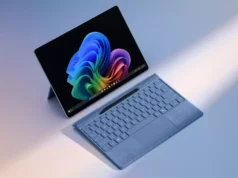Smartphones with 6-inch or more of screen real estate have an appeal of their own. And buyers are spoilt for choices too, what with all the big-name companies having launched their big-screen phones already. Those include the Samsung Galaxy Note 9 followed by the iPhone XS Max. Last to join the esteemed company is the Google Pixel 3 XL.
Also, apart from their expansive displays, each of the phones boasts of superb build quality and score high on the style quotient. They come with excellent cameras too and have a generous feature list as well. However, that’s not the only common factor between the three as each is priced on the other side of the $1000 mark (the top-end model at least). With that much of your hard-earned money at stake, let’s find out how the three compare among themselves. Also, before proceeding into the details, it’s worth pointing out the Note 9 is the only one among the three to come with a stylus, which in turn enhances its functionality enormously. The same is, however, lacking with both the Apple and Google devices.
Display
The iPhone XS Max has the biggest display here at 6.5-inch. Apple also describes the display as Super Retina OLED panel having a resolution of 2688 x 1242 pixels, which makes for a pixel density of 458 ppi. In comparison, the Note 9 comes with a 6.4-inch Super AMOLED panel having a resolution of 2960 x 1440 pixels that translates to a pixel density of 516 ppi. The Pixel 3 XL, in turn, has the smallest display here, which stands at 6.3-inch and is described as flexible OLED. The Pixel 3 XL, however, has the highest pixel density of 522 pixels.
Dimension
The three phones make for an interesting comparison here. The Note 9 is the biggest (length wise – 161.90 mm) of the lot here but not the heaviest, weighing in at 201 grams. In contrast, the Pixel 3 XL has the smallest length at 157.50 mm but weighs the heaviest at 208 grams. The iPhone XS Max is the lightest of the trio here, tipping the scales at just 184 grams.
Here are the dimensions in mm of the three phones: Note 9: 161.90 x 76.40 x 8.80 mm, Pixel 3 XL: 157.50 x 77.40 x 7.70 mm, iPhone XS Max: 158.00 x 76.70 x 7.90
Processor and Memory
Both the Android devices here – Galaxy Note 9 and Pixel 3 XL comes powered by the Snapdragon 845 chipset. However, the Note 9 comes in two models here featuring 6 GB and 8 GB of RAM along with 128 and 512 GB of storage respectively. The storage is further expandable to 512 GB via microSD cards. In comparison, the Pixel 3 XL has a standard RAM setting of 4 GB but comes in two storage options of 64 GB and 128 GB and lacks an expandable storage option. The iPhone XS Max is also available in three storage models of 64, 256 and 512 GB and is another one to lack an expandable storage option but comes with a standard memory size option of 4 GB.
Camera
The Pixel 3 XL is the odd one out here with a single lens rear camera of 12.2 mp resolution. The iPhone XS Max comes with a dual-lens camera setup comprising of a 12 mp standard sensor and 12 mp telephoto lens. Things are slightly different with the Note 9 in that it comes with a 12 mp wide angle lens and 12 mp telephoto sensor.
Interestingly, where the Pixel 3 XL lags in the rear, it makes up for that in the front where there are twin 8 mp sensors for selfie shots. The iPhone XS Max features a 7 mp front shooter and is complemented by a host of sensors that powers Face ID tech. The Note 9, in turn, comes with a single 8 mp front shooter.
OS
The Pixel 3 XL runs Android Pie right out of the gates while the Note 9 is slightly outdated considering that it runs Android Oreo. The iPhone XS Max run the latest iOS 12.
Battery
The Note 9 has the highest battery rating here with a 4000 mAh powerpack followed by a 3430 mAh unit for the Pixel 3 XL. Apple iPhone XS Max has a smallest sized battery of 3174 mAh.
Price
No matter how advanced or feature-rich the smartphone might be, it all boils down to how much of a damage it will cause to your wallet. And the iPhone XS Max can be the most damaging here given that it starts at $1,099 for the 64 GB model, $1,249 for 256 GB, and $1,449 for the top-end 512 GB version. The Note 9 is slightly more affordable at $1000 for the starting 128 GB model and $1250 for the 512 GB version. The Pixel 3 XL in comparison is a lot more affordable at $899 for the 64 GB model and $999 for the 128 GB version.
Key Specification:
| Phone | Galaxy Note 9 | iPhone Xs Max | Pixel 3 XL |
|---|---|---|---|
| Display | 6.4-inch, 2960 x 1440 (Quad HD+) dual edge Super AMOLED 516 ppi Corning Gorilla Glass 5 | Super Retina HD display 6.5‑inch (diagonal) all‑screen OLED HDR display 2688‑by-1242‑pixel resolution at 458 ppi | Fullscreen 6.3” display QHD+ OLED at 523ppi 18.5:9 Corning Gorilla Glass 5 |
| Processor | Exynos 9810 Octa (10 nm) – EMEA Qualcomm SDM845 Snapdragon 845 (10 nm) – USA/LATAM, China | A12 Bionic chip, Next-generation Neural Engine | Qualcomm Snapdragon 845 Adreno 630 Titan M security module |
| OS | Android 8.1 | iOS 12 | Android 9 Pie |
| Memory | 6/8 GB RAM 128 / 512 GB | RAM NA 64 / 256 / 512GB | 4 GB RAM 64 /128 GB |
| Micro SD support | Up to 512 GB | No | No |
| Dimensions | 161.9 x 76.4 x 8.8 mm 201 grams | 157.5× 77.4× 7.7 mm 208 grams | 158.0x 76.7x 7.9 mm 184 grams |
| Cameras | Rear: 12.0 MP + 12.0 MP, F1.5/F2.4 (Dual Aperture), F2.4, Optical Zoom at 2x, Digital Zoom up to 10x Front: 8 MP, f/1.7, 25mm (wide), 1/3.6″, 1.22µm, AF | Rear: Dual 12-megapixel wide-angle and telephoto cameras Wide-angle: ƒ/1.8 aperture Telephoto: ƒ/2.4 aperture 2x optical zoom; digital zoom up to 10x Front: 7-megapixel camera ƒ/2.2 aperture Portrait mode with advanced bokeh and Depth Control | Rear: 12.2 MP dual-pixel 1.4 μm Autofocus + dual pixel phase detection Optical + electronic image stabilization Spectral + flicker sensor f/1.8 aperture Front: 8 MP wide-angle and telephoto cameras Wide-angle: f/2.2 aperture & DFoV 107° Telephoto: f/1.8 aperture & DFoV 75° |
| Video Recording | 2160p@60fps, 1080p@240fps, 720p@960fps, HDR, dual-video rec | 2160p@60fps, 1080p@240fps, 720p@960fps, HDR, dual-video rec | 1080p @ 30fps, 60fps, 120fps 720p @ 30fps, 60fps, 240fps 4K @ 30fps |
| Connectivity | Wi-Fi 802.11 a/b/g/n/ac, dual-band, Wi-Fi Direct, hotspot, 5.0, A2DP, LE, aptX, Yes, with A-GPS, GLONASS, BDS, GALILEO, NFC, USB 3.1, Type-C reversible connector, 3.5mm Stereo | Gigabit-class LTE with 4×4 MIMO and LAA4 802.11ac Wi‑Fi with 2×2 MIMO Bluetooth 5.0 wireless technology NFC with reader mode | Wi-Fi 2.4GHz + 5.0GHz 802.11a/b/g/n/ac Bluetooth 5.0 + LE NFC Google Cast |
| Sensors | Accelerometer, Barometer, Fingerprint Sensor, Gyro Sensor, Geomagnetic Sensor, Hall Sensor, HR Sensor, Iris Sensor, Pressure Sensor, Proximity Sensor, RGB Light Sensor | Face ID Barometer Three‑axis gyro Accelerometer Proximity sensor Ambient light sensor | Active Edge Back-mounted Pixel Imprint™ fingerprint sensor for fast unlocking Proximity/Ambient light sensor Accelerometer/Gyrometer Magnetometer Barometer Android Sensor Hub Advanced x-axis haptics for sharper/defined response |
| Stylus | S Pen | No | No |
| Battery | Non-removable Li-Ion 4000 mAh battery Talk time: Up to 29 | Lasts up to 1.5 hours longer than iPhone X Talk time (wireless): Up to 25 hours Fast-charge capable: Up to 50% charge 30 minutes | 3430 mAH battery 18 W/2 A USB type-C charger 18 W fast charging Qi wireless charging |
| Water and dust resistance | IP68 dust/water proof (up to 1.5m for 30 mins) | splash, water and dust resistant, IP68 rating (maximum depth of 2 metres up to 30 minutes). | Pixel 3 XL has a water protection rating of IPX8 under IEC standard 60529 |











